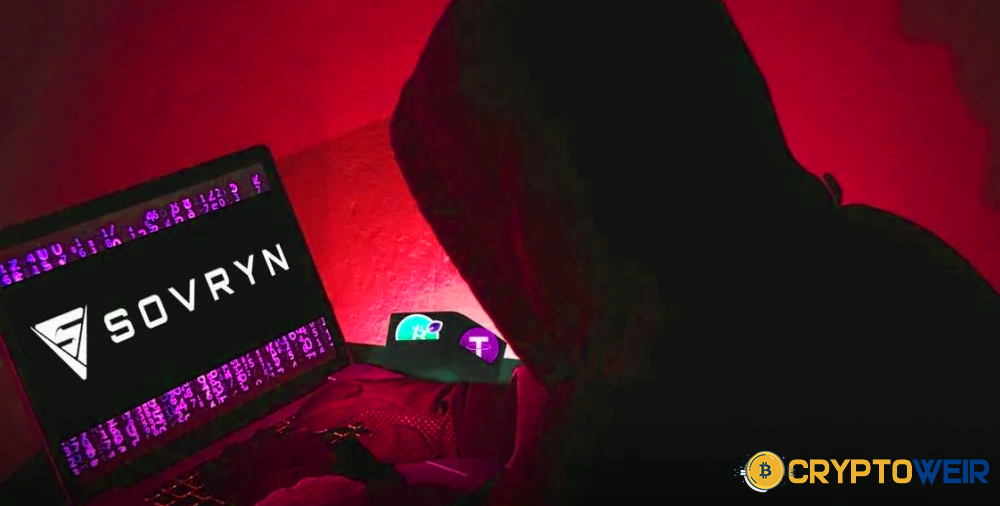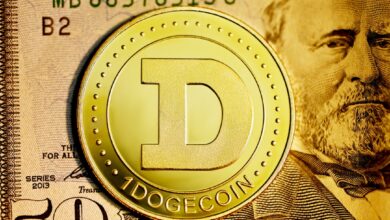Litecoin Trading: Discover the Path to Financial Freedom
Litecoin Trading: Discover the Path to Financial Freedom

Litecoin Trading: Discover the Path to Financial Freedom
Can investing in cryptocurrency be the key to achieving financial independence? With the recent surge in Litecoin’s value, this question is more relevant than ever. According to Rafael Quintana Martinez, Litecoin is up 5.1% this week, trading at $91.46 as it recovers from a recent decline to $82.46.
The broader crypto market is showing signs of stabilization, with Bitcoin gaining 2.5% to $109,980, just below the key $110,000 resistance. As the market continues to evolve, investors are looking for opportunities to capitalize on the growth of cryptocurrencies like Litecoin.

Key Takeaways
- Cryptocurrency market is showing signs of stabilization.
- Litecoin’s value has increased by 5.1% this week.
- Bitcoin is gaining 2.5% to $109,980.
- Investors are looking for opportunities in cryptocurrencies.
- The market is evolving, presenting new opportunities.
Understanding Litecoin and Its Place in the Cryptocurrency Market
Litecoin has emerged as a significant player in the cryptocurrency market, offering a unique alternative to Bitcoin. As the cryptocurrency landscape continues to evolve, understanding Litecoin’s origins, development, and distinguishing features is crucial for traders and investors alike.
The Origins and Development of Litecoin
Litecoin was created in 2011 by Charlie Lee, a former Google engineer, as a fork of the Bitcoin protocol. The primary goal was to address some of Bitcoin’s limitations, such as slow transaction processing times. Litecoin’s development focused on making transactions faster and more efficient. It achieves this through a faster block generation rate, allowing for quicker transaction confirmations.
According to Yvonne Kiambi, Litecoin continues to trade well above both its 50-day and 200-day moving averages, highlighting a bullish long-term trend. The 50-day MA is near $86.90, while the 200-day MA sits closer to $88.40. This data indicates a stable upward trend in Litecoin’s price.
How Litecoin Differs from Bitcoin and Other Cryptocurrencies
Litecoin’s differences from Bitcoin and other cryptocurrencies lie in its technical specifications and market positioning. Litecoin uses the Scrypt hashing algorithm, making it more resistant to ASIC mining than Bitcoin, which uses SHA-256. This difference has implications for miners and the overall security of the network.
As Kiambi’s analysis suggests, Litecoin’s price movements are influenced by its market dynamics, including supply and demand factors. Understanding these dynamics is essential for successful Litecoin trading. “Litecoin’s ability to maintain a bullish trend despite market fluctuations underscores its potential as a reliable investment option,” as noted by experts in the field.
The Fundamentals of Litecoin Trading
As the cryptocurrency landscape continues to evolve, the importance of understanding Litecoin trading fundamentals cannot be overstated. Litecoin, often considered a more agile alternative to Bitcoin, has garnered significant attention from investors and traders alike. Its faster transaction times and lower fees make it an attractive option for those looking to diversify their cryptocurrency portfolios.
How Cryptocurrency Trading Works
Cryptocurrency trading involves the exchange of digital currencies on online platforms known as cryptocurrency exchanges. These exchanges facilitate transactions between buyers and sellers, allowing for the trading of various cryptocurrencies, including Litecoin. The process is similar to traditional stock trading but operates 24/7, given the global nature of cryptocurrency markets.
Trading platforms provide tools for market analysis, including charts and technical indicators, to help traders make informed decisions. Some popular trading platforms for Litecoin include Binance, Coinbase, and Kraken. When choosing a platform, it’s essential to consider factors such as fees, security, and user interface.
Litecoin Market Dynamics
Litecoin’s market dynamics are influenced by a variety of factors, including supply and demand, investor sentiment, and broader cryptocurrency market trends. According to expert insights, such as those from Rafael Quintana Martinez, a breakout in Bitcoin’s price could potentially drive a rally in Litecoin, highlighting the interconnectedness of cryptocurrency markets.
Understanding these dynamics is crucial for developing effective investment strategies for Litecoin. Traders must stay informed about market news and trends to make timely decisions.
Key Factors Affecting Litecoin Value
Several key factors affect Litecoin’s value, including its adoption rate, competition from other cryptocurrencies, and regulatory developments. The table below summarizes some of these factors and their potential impact on Litecoin’s value.
| Factor | Potential Impact |
|---|---|
| Adoption Rate | Increased adoption can drive up demand and value. |
| Competition | Competition from other cryptocurrencies can negatively impact Litecoin’s value. |
| Regulatory Developments | Favorable regulations can boost Litecoin’s value, while unfavorable ones can depress it. |
By understanding these fundamentals, traders can better navigate the complexities of Litecoin trading and make more informed investment decisions.
Getting Started with Litecoin Trading
Embarking on your Litecoin trading journey requires a solid foundation in the basics. As a beginner, understanding the initial steps involved in trading Litecoin is crucial for a successful start.
Setting Up Your Digital Wallet
The first step in Litecoin trading is setting up a digital wallet. A digital wallet is essential for storing, sending, and receiving Litecoin. There are various types of wallets, each with its own set of features and security measures.
Hot Wallets vs. Cold Storage
When choosing a wallet, one of the key decisions is whether to opt for a hot wallet or cold storage. Hot wallets are connected to the internet, offering convenience and ease of access, but they are more vulnerable to hacking. On the other hand, cold storage solutions are offline, providing a higher level of security but less convenience for frequent transactions.
Recommended Wallet Options
Some popular wallet options for Litecoin include:
- Litecoin Core Wallet
- Exodus Wallet
- Ledger Nano X
These wallets offer a balance between security and usability, making them suitable for beginners.
Choosing the Right Cryptocurrency Exchange
After setting up your digital wallet, the next step is to choose a reputable cryptocurrency exchange. The exchange is where you’ll buy and sell Litecoin. When selecting an exchange, consider factors such as fees, security measures, and user interface.
Top Exchanges for U.S. Traders
For traders based in the United States, some of the top exchanges include:
- Coinbase
- Kraken
- Gemini
These exchanges are known for their reliability and compliance with U.S. regulations.
Security Considerations
Security is paramount when trading cryptocurrencies. Ensure that the exchange you choose has robust security measures in place, such as two-factor authentication and cold storage for assets.
Making Your First Litecoin Purchase
Once you’ve set up your wallet and chosen an exchange, you’re ready to make your first Litecoin purchase. Start by depositing funds into your exchange account, then navigate to the Litecoin trading section and place your order.
It’s advisable to start with a small amount to get familiar with the process. As you gain more experience, you can increase your investment. Remember, trading cryptocurrencies involves risks, and it’s essential to do your own research and consider your financial situation before making any investment decisions.
Essential Litecoin Trading Strategies
The key to profitable Litecoin trading lies in mastering essential trading strategies. Traders must understand the different approaches to capitalize on Litecoin’s market movements.
Day Trading vs. Long-term Investment
Traders can choose between day trading and long-term investment strategies. Day trading involves making multiple trades within a day to profit from small price fluctuations. In contrast, long-term investment involves holding Litecoin for an extended period, potentially yielding higher returns as the cryptocurrency appreciates over time.
According to Yvonne Kiambi’s analysis, Litecoin’s RSI stands at approximately 78.9, indicating overbought territory. This suggests that a long-term approach might be more prudent, as the market may be due for a correction.
Technical Analysis for Litecoin Trading
Technical analysis is a crucial tool for Litecoin traders. It involves examining past market data to predict future price movements.
Chart Patterns to Watch
Chart patterns, such as head and shoulders, triangles, and wedges, provide insights into potential market trends. Recognizing these patterns can help traders make informed decisions.
Using Technical Indicators
Technical indicators like the MACD (Moving Average Convergence Divergence) and RSI (Relative Strength Index) offer valuable insights. For instance, Litecoin’s MACD remaining in positive territory indicates a bullish trend, while the RSI suggests the market is overbought.

Fundamental Analysis Techniques
Fundamental analysis involves evaluating Litecoin’s intrinsic value by examining related economic, financial, and other qualitative and quantitative factors. This includes assessing adoption rates, network congestion, and global economic trends to make informed investment decisions.
By combining technical and fundamental analysis, traders can develop a comprehensive understanding of the Litecoin market, enabling them to make more informed trading decisions.
Advanced Techniques for Successful Litecoin Trading
To take your Litecoin trading to the next level, it’s essential to understand and apply advanced trading techniques. As the cryptocurrency market continues to evolve, staying ahead of the curve is crucial for maximizing profits.
Leveraging Trading Pairs
One advanced technique is leveraging trading pairs, which involves trading Litecoin against other cryptocurrencies or fiat currencies. This strategy allows traders to capitalize on the relative price movements between different assets. For instance, traders can use Litecoin/BTC or LTC/USD trading pairs to diversify their trading portfolio and potentially increase their returns.
Arbitrage Opportunities with Litecoin
Arbitrage is another advanced technique that involves exploiting price differences between various exchanges or markets. By buying Litecoin at a lower price on one exchange and selling it at a higher price on another, traders can profit from these discrepancies. However, this requires quick execution and an understanding of the associated risks and fees.
Automated Trading and Bots
Automated trading using bots has become increasingly popular among Litecoin traders. These bots are programmed to execute trades based on predefined algorithms, allowing for faster and more precise trading decisions. According to Yvonne Kiambi, whale activity and accumulation trends support the bullish case for Litecoin, with on-chain data showing steady accumulation by whales.
Popular Trading Bots for Litecoin
Some popular trading bots for Litecoin include those that offer advanced features such as backtesting, customizable indicators, and multi-exchange support. Traders should research and choose a bot that aligns with their trading strategy and risk tolerance.
Setting Up Effective Algorithms
To set up effective algorithms, traders need to define their trading goals and risk parameters. This involves selecting the right indicators, setting appropriate stop-loss and take-profit levels, and continuously monitoring and adjusting the algorithm as needed.
Managing Risks in the Volatile Litecoin Market
Navigating the Litecoin market requires a deep understanding of its inherent volatility. As investor optimism builds around the possibility of a Litecoin ETF approval by the U.S. Securities and Exchange Commission, traders must be equipped with effective risk management strategies.
Understanding Cryptocurrency Volatility
Cryptocurrency volatility refers to the rapid and significant price fluctuations that can occur within a short period. This volatility is influenced by various factors, including market sentiment, regulatory changes, and global economic trends.
To manage this volatility, traders should stay informed about market news and trends. Utilizing tools and resources provided by reputable cryptocurrency exchanges can help traders make informed decisions.
Implementing Stop-Loss and Take-Profit Orders
One effective way to mitigate risks in Litecoin trading is by implementing stop-loss and take-profit orders. A stop-loss order automatically sells a trader’s Litecoin when the price falls to a specified level, limiting potential losses.
Conversely, a take-profit order allows traders to lock in profits when the price reaches a predetermined level. By setting these orders, traders can reduce the emotional aspect of trading and stick to their strategies.

Portfolio Diversification Strategies
Diversifying a portfolio is a key risk management strategy in Litecoin trading. By allocating investments across various assets, traders can reduce their exposure to any single market.
A well-diversified portfolio might include a mix of cryptocurrencies, stocks, and other investment vehicles. The following table illustrates a simple diversification strategy:
| Asset | Allocation Percentage |
|---|---|
| Litecoin | 30% |
| Other Cryptocurrencies | 20% |
| Stocks | 30% |
| Bonds | 20% |
By diversifying their portfolios, traders can better navigate the volatile Litecoin market and protect their investments.
Analyzing Litecoin Price Movements and Making Predictions
Understanding Litecoin’s price movements is crucial for traders looking to capitalize on the digital currency market. The ability to analyze and predict these movements can significantly impact trading decisions on online trading platforms.
Historical Price Trends
Litecoin’s historical price trends offer valuable insights into its potential future movements. According to Yvonne Kiambi’s analysis, Litecoin’s price behavior suggests a potential consolidation phase just below the $92 psychological level. By examining past price patterns, traders can identify recurring trends and make more informed decisions.
Key Indicators for Price Prediction
Several key indicators are crucial for predicting Litecoin’s price movements. These include moving averages, relative strength index (RSI), and Bollinger Bands. By analyzing these indicators, traders can gain a better understanding of market dynamics and make more accurate predictions. For instance, a crossover between short-term and long-term moving averages can signal a potential trend reversal.
Market Sentiment Analysis
Market sentiment analysis plays a vital role in understanding Litecoin’s price movements. By gauging the overall sentiment of traders and investors, one can predict potential price shifts. Tools such as sentiment analysis algorithms and social media monitoring can provide insights into market mood, helping traders make more informed decisions on online trading platforms.
Regulatory Considerations for Litecoin Trading in the United States
Regulatory considerations play a pivotal role in Litecoin trading in the United States, affecting both strategy and compliance. As the cryptocurrency market continues to evolve, understanding the legal and regulatory framework is essential for traders.
Current Legal Status of Cryptocurrency Trading
The legal status of cryptocurrency trading in the U.S. is shaped by various federal and state regulations. Currently, cryptocurrency trading is legal, but it is subject to oversight by bodies such as the Securities and Exchange Commission (SEC) and the Commodity Futures Trading Commission (CFTC). Bloomberg analysts have even assigned a 94% probability to the approval of a Litecoin ETF by the SEC, indicating a potentially significant development in the regulatory landscape.
Tax Implications for Litecoin Traders
Litecoin traders must be aware of the tax implications of their trading activities. The IRS treats cryptocurrencies as property for tax purposes, meaning that capital gains tax applies to profits made from trading Litecoin. Traders are required to report their gains and losses on their tax returns, and failure to comply can result in penalties.
Staying Compliant with Changing Regulations
Regulatory environments are not static; they evolve in response to market developments and legislative changes. To stay compliant, Litecoin traders must keep abreast of regulatory updates and adjust their strategies accordingly. This includes understanding anti-money laundering (AML) and know-your-customer (KYC) requirements when buying and selling Litecoin on cryptocurrency exchanges.
Key considerations for compliance include:
- Monitoring regulatory announcements from the SEC and CFTC
- Understanding tax obligations and reporting requirements
- Implementing AML/KYC practices when trading on exchanges
By staying informed and adapting to the changing regulatory landscape, Litecoin traders can minimize risks and maximize opportunities in the cryptocurrency trading market.
Conclusion: Achieving Financial Freedom Through Litecoin Trading
Litecoin trading offers a promising path to financial freedom, as discussed throughout this article. By understanding Litecoin’s place in the cryptocurrency market, grasping the fundamentals of Litecoin trading, and employing effective investment strategies for Litecoin, traders can capitalize on the opportunities presented by this cryptocurrency.
Platforms like ZA Miner provide a stress-free way to engage with Litecoin and other cryptocurrencies through cloud mining, making it easier for individuals to participate in the market. As traders navigate the complexities of Litecoin trading, they must remain informed about market dynamics, regulatory considerations, and risk management strategies.
By applying the knowledge gained from this article and staying up-to-date with market trends, traders can make informed decisions and potentially achieve financial freedom through Litecoin trading. It is essential to continue learning and adapting to the ever-changing cryptocurrency landscape to maximize the potential of Litecoin trading.
FAQ
What is Litecoin and how does it differ from Bitcoin?
Litecoin is a peer-to-peer cryptocurrency that was created as a fork of the Bitcoin protocol. It differs from Bitcoin in its faster transaction processing times and uses a different hashing algorithm.
How do I start trading Litecoin?
To start trading Litecoin, you need to set up a digital wallet, choose a reputable cryptocurrency exchange, and make your first Litecoin purchase.
What are the key factors that affect Litecoin’s value?
The value of Litecoin is affected by market demand, adoption rates, regulatory changes, and competition from other cryptocurrencies.
What is the best trading strategy for Litecoin?
The best trading strategy for Litecoin depends on your investment goals and risk tolerance. Popular strategies include day trading, long-term investment, and technical analysis.
How can I manage risks in Litecoin trading?
To manage risks in Litecoin trading, you can implement stop-loss and take-profit orders, diversify your portfolio, and stay informed about market trends.
What are the tax implications of trading Litecoin in the United States?
The tax implications of trading Litecoin in the United States include capital gains tax on profits and potential tax losses. It’s essential to consult a tax professional to ensure compliance.
How can I predict Litecoin’s future price movements?
To predict Litecoin’s future price movements, you can analyze historical price trends, key indicators, and market sentiment.
What are the benefits of using automated trading bots for Litecoin?
Automated trading bots can help you trade Litecoin more efficiently, execute trades at optimal times, and reduce emotional bias in your trading decisions.
How can I stay compliant with changing regulations for Litecoin trading?
To stay compliant with changing regulations, you should stay informed about regulatory updates, consult with a legal professional, and adjust your trading practices accordingly.
What are the most popular cryptocurrency exchanges for trading Litecoin?
Popular cryptocurrency exchanges for trading Litecoin include Coinbase, Binance, and Kraken. It’s essential to research and choose a reputable exchange that meets your needs.
What is the role of trading pairs in Litecoin trading?
Trading pairs allow you to exchange one cryptocurrency for another, including Litecoin. Understanding trading pairs is crucial for successful Litecoin trading.
How can I analyze market sentiment for Litecoin price prediction?
To analyze market sentiment, you can monitor social media, news outlets, and online forums to gauge the overall attitude towards Litecoin and make informed trading decisions.









